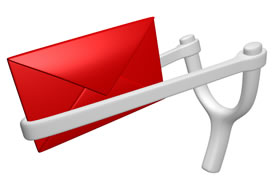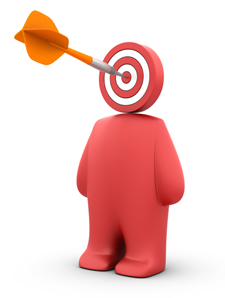Get Some Action - 6 Steps to Higher Conversion with Email
Action emails – they’re the bigger, more independent brother to regular mass emails. With an open rate that is more than double regular mass email, this is an awesome email marketing tool that will help you maintain relationships and connect with new customers. Plus, you’ll likely see some positive conversion rates.
What are action emails?
Also known as trigger emails, action emails are a pre-written set of messages that are sent based on an event or triggered action your customer takes, (orders for the first time, repeat purchase, abandons a shopping cart, credit card expiring, etc).
Here’s how it generally works:
Let’s say, for example, you’d like to send out a thank you message to first-time purchasers and ask them what they thought of the wine.
- Create your own, customized thank you message.
- Select who you want it to be sent to (first-time purchasers in this case).
- Determine how many days the message is to be sent after the time of purchase (10 days after the purchase, for example).
- The system will then automatically check to see if orders fit the triggers and send out the specific email.
Now that you’re in the loop, below are some best practices to consider before you create an action email campaign.
1) Have a Purpose
Think through what you would like to achieve with each action email campaign. Most systems have preset triggers like type of order placed, credit card expiry, anniversary dates, etc.
- Set an objective - whether it’s to encourage rating a wine purchased or sign-up to be a club member, the email should have a clear call to action.
- Determine your target. Are you looking to contact first-time orders or valued club members? Tailor your message to the varying needs of each individual group.
2) Be Personal
If your brand was a person, what would they sound/act like? It’s unlikely that people will read an email if it sounds like it came from a robot and/or a professor of quantum physics.
- Personalize your communication to each recipient’s name.
- Build trust by including information about you/and or the company (an email signature from the owner, for example).
- Incorporate your brand’s personality in your content and keep it consistent.
3) Offer Value
Focus on interesting content that’s relevant to individual groups. For example, first-time purchasers should be enticed to place their second order, whereas club members may be interested in club discounts and wine reviews. You want to engage readers without them feeling like that they’re being pressured to purchase anything.
4) Keep it Simple
Think about your layout and design. If it looks like one of those “Win a FREE Trip to Mexico” emails, it’s time to reevaluate your look.
- Keep font type, color and size to a minimum.
- Avoid long emails. Keep copy short and to the point (3 -5 sentences).
- For better readability, use a serif font (Arial, Helvetica, etc).
5) Be Clear
The first thing that your readers will see is the subject line. If it’s confusing or irrelevant, the more likely it’ll be ignored.
- Keep your subject line short (50 characters or less). Something as simple as, “Rate the wine you recently purchased.”
- Avoid cheesy promotional phrases such as “win” and “new.”
- Avoid using CAPS and exclamation marks.
- Keep it unique and engaging. Entice the reader to want to read more.
6) Respect Time
Remember, it's a trigger not a steady stream. Space out your action emails. Although they are automatic, ensure you check-in regularly and make sure you are not over-sending.
~~
Need more info on action emails? Check out our webpage.
Questions or comments? Don’t be shy; feel free to leave them below.